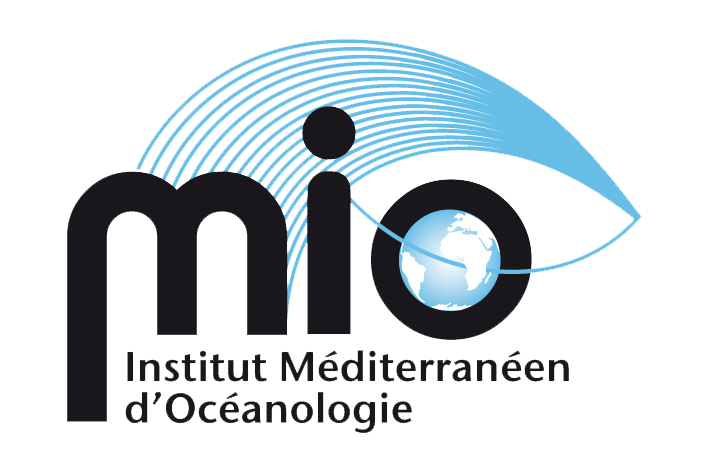Revisiting the island mass effect
Phytoplankton, the tiny algae that fix carbon dioxide via photosynthesis, represent the base of the oceanic food chain. As such, they support essentially all life in the oceans. In the tropical Pacific, where phytoplankton biomass is low, islands act as sources of nutrients. This natural fertilization process supports productive ecosystems characterized by higher biomass and biodiversity than surrounding waters. Termed “island mass effect”, the impact of islands on phytoplankton has been known for sixty years. However, the vast majority of islands remain unstudied and impacts at the basin scale are not well characterized. Additionally, little is known regarding changes in phytoplankton community structure despite implications for higher trophic levels.
The SAPPHIRE project
The objective of the SAPPHIRE project (Systematic Analysis of Pacific PHytoplankton and Island Regional Effects) was to elucidate the impact of islands on phytoplankton. To do so, we conducted a systematic study of the island effect in the tropical Pacific from a suite of physical and biological satellite data. The project leveraged the OUTPACE oceanographic cruise that took place in the western south tropical Pacific near several islands in 2015. SAPPHIRE also used data from the satellite-based PHYSAT method that detects phytoplankton functional groups from space.
Using in situ and satellite data in the OUTPACE region, we first developed an algorithm that automatically identifies and characterizes the island mass effect. Then we applied the algorithm to the entire tropical Pacific using satellite data. The ultimate goals were to:
1) quantify the impact of islands on phytoplankton biomass and biodiversity in the tropical Pacific, and
2) classify the islands as a function of enrichment process and phytoplankton response using machine learning techniques.
Oceanographic campaign investigating nitrogen fixation and biological production in the Southwest Pacific.
Using ocean color signals to determine the dominant phytoplankton groups in surface waters.
Progress and main results
SAPPHIRE started on April 1st, 2018 and ended in June 2019. Our work revealed a strong impact of islands on phytoplankton in the tropical Pacific. We confirmed that islands significantly increases phytoplankton biomass, but also found a strong influence on phytoplankton species and biodiversity. On average, areas fertilized by islands represent about 3% of the tropical Pacific, and islands increase chlorophyll by about 9%. We also identified a new type of island mass effect, where the phytoplankton response is “delayed” in time. Since phytoplankton get carried away from islands by oceanic currents while they grow, this leads to a bloom without any apparent connection with the islands that triggered it. Finally, an analysis of chlorophyll in the southwest tropical Pacific (master 2 internship) revealed a strong influence of islands during the rainy season.
Two papers were published (see below) and a third one is in preparation; check back for more information!
Basin-scale analysis of the island mass effect in the tropical Pacific ocean
How islands can remotely trigger open-ocean blooms
Analysis of chlorophyll variability for the 2002-2018 time period
Dissemination of results
Presentations
Ocean Optics XXIV conference, October 7-12, 2018: Delayed island effects can trigger nitrogen fixer blooms. (abstract, poster).
EGU General Assembly, April 8-12, 2019: Revisiting the island mass effect: a systematic study in the tropical Pacific. (abstract, poster).
Publications
Messié, M., A. Petrenko, A.M. Doglioli, C. Aldebert, E. Martinez, G. Koenig, S. Bonnet and T. Moutin, 2020. The delayed island mass effect: How islands can remotely trigger blooms in the oligotrophic ocean. Geophysical Research Letters, 47(2), e2019GL085282, https://doi.org/10.1029/2019GL085282 (PDF)
Messié, M., A. Petrenko, A.M. Doglioli, E. Martinez and S. Alvain, 2022. Basin-scale biogeochemical and ecological impacts of islands in the tropical Pacific Ocean. Nature Geoscience, 15, 469–474, https://doi.org/10.1038/s41561-022-00957-8 (full text, PDF)
Press
Terrawatch: how tropical islands feed algal blooms (The Guardian, Feb 2020)
Comment les îles du Pacifique tropical peuvent-elles fertiliser le plancton à distance ? (INSU press release, March 2020)
Impact biogéochimique et écologique des îles du Pacifique (INSU press release, June 2022)
Data and software
Data
The main outputs of the study are available as a dataset hosted on Zenodo. They include the island database, masks for island-enriched and reference regions, and climatological island impacts on chlorophyll, primary production and PHYSAT. The PHYSAT climatology is available there as well.
Software
The algorithm automatically detecting island effects is available at https://github.com/messiem/toolbox_IME_detection and the corresponding release was published on Zenodo. The toolbox also includes datasets and example code to reproduce figures from the 2022 paper.
Team and collaborators


SAPPHIRE was a 15-month project funded by the European Union’s Horizon 2020 research and innovation program under the Marie Skłodowska-Curie grant agreement SAPPHIRE No. 746530 (MSCA individual fellowship to Monique Messié at the Mediterranean Institute of Oceanography).
Team and collaborators include Anne Petrenko, Séverine Alvain, Andrea Doglioli, Thierry Moutin, Sophie Bonnet, Elodie Martinez and Ibrahima Afoula Coly.

